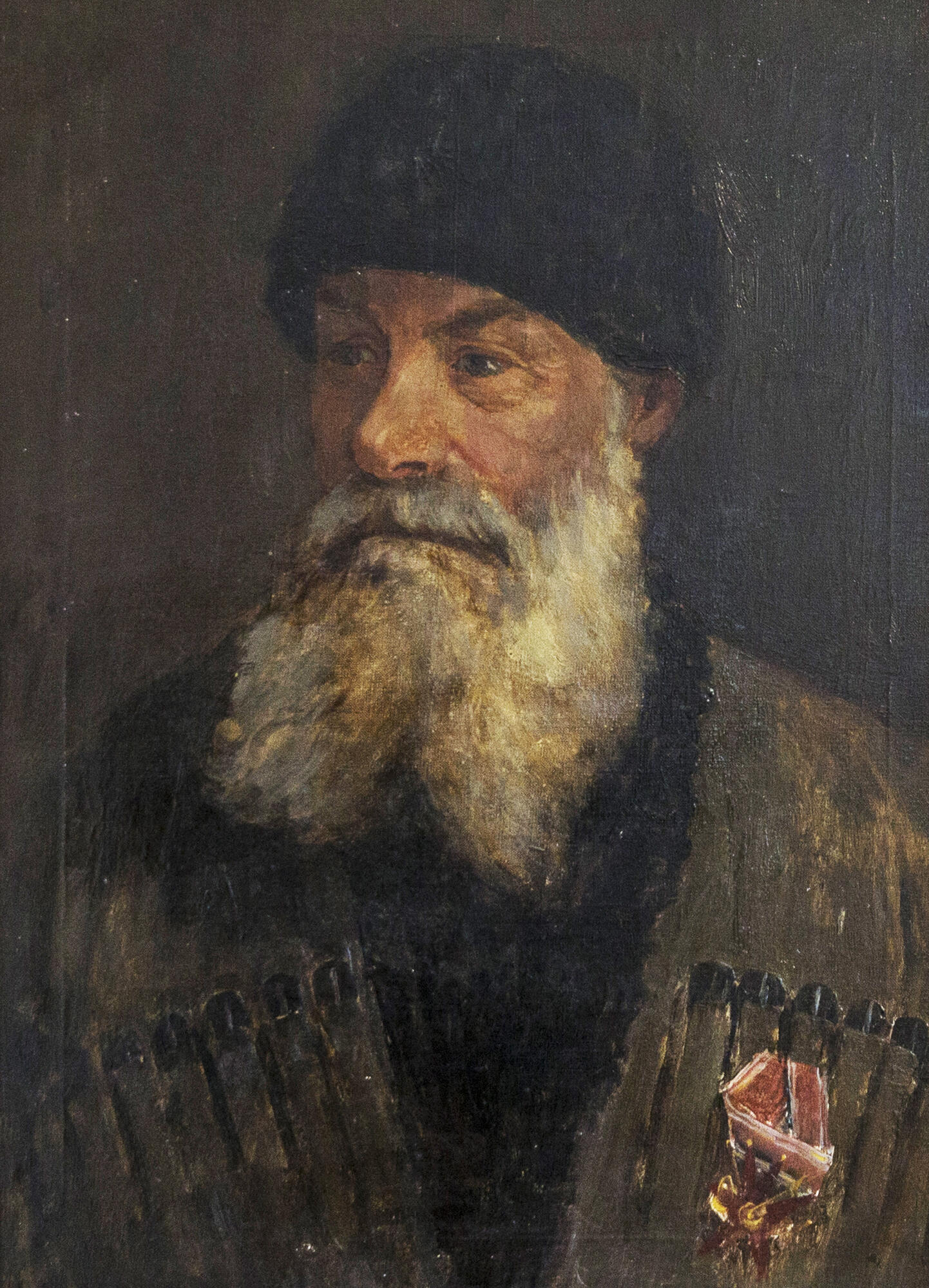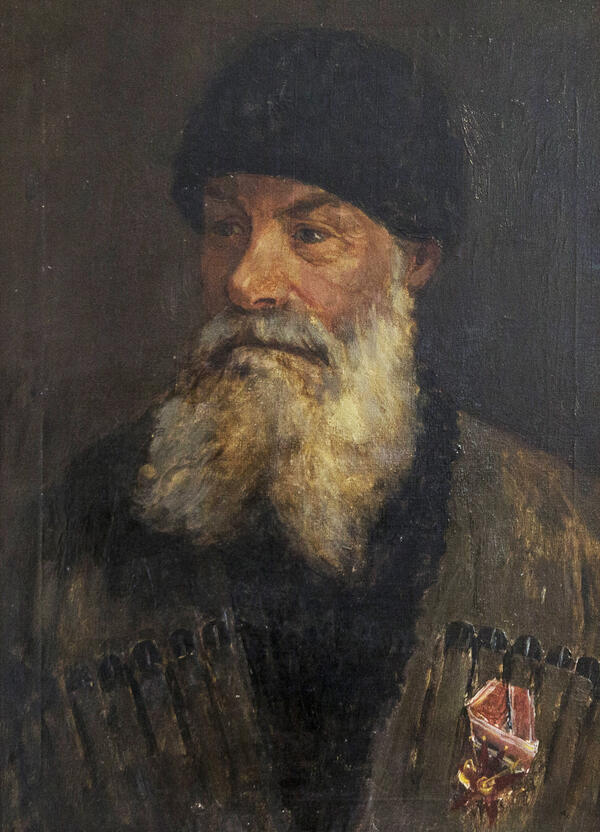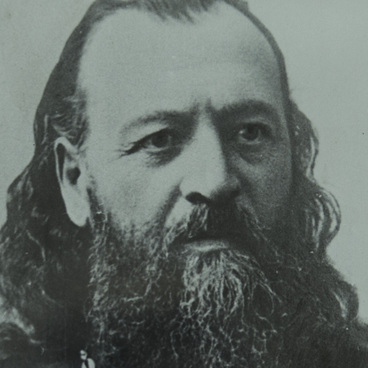The paintings that Kosta Khetagurov made in Vladikavkaz in the first years after his return from Saint Petersburg were a fusion of his observations, knowledge, and beliefs about the world around him. He painted portraits and landscapes, paintings about social issues, and even caricatures. Khetagurov’s paintings reflected the everyday life and folk culture of ordinary residents in the Caucasus Mountains.
Portraits make up a large fraction of Kosta Khetagurov’s creative heritage. In the 19th century, during the formation of the Ossetian national consciousness, this became one of the main genres in national art. It affirmed the value and dignitity of man, as well as the outstanding personal qualities and contribution to the development of society.
Kosta Levanovich usually wrote to his friends and family. He tried to convey the smallest details of those he portrayed, while spent much time observing their faces, trying to get into his models' inner world. Khetagurov’s portraits were not distinguished by complex compositions. As a rule, he depicted people from the chest or waist up, in calm, natural poses against a neutral background.
Researchers consider Khetagurov’s portrait of Misirbi Gutiev, one of the initiators of the resettlement of Ossetians to Kuban Oblast, to be of his best male portraits.
Misirbi Gutiev was born in 1830 in the village of Kharisdzhin. After finishing his education, he joined the Caucasian Mountain Cavalry Division, and after a while transferred to the Terek Permanent Militsia.
In 1870, alongside Kosta’s father, Levan Khetagurov, Misirbi Gutiev became responsible for the resettlement of landless Ossetians to Kuban Oblast, where the government allocated them uninhabited plots of land. Through this, the Russian authorities planned to defuse the already tense relations between Ossetian and Georgian nobles, and also populate the mountainous part of Kuban Oblast with Christians.
Portraits make up a large fraction of Kosta Khetagurov’s creative heritage. In the 19th century, during the formation of the Ossetian national consciousness, this became one of the main genres in national art. It affirmed the value and dignitity of man, as well as the outstanding personal qualities and contribution to the development of society.
Kosta Levanovich usually wrote to his friends and family. He tried to convey the smallest details of those he portrayed, while spent much time observing their faces, trying to get into his models' inner world. Khetagurov’s portraits were not distinguished by complex compositions. As a rule, he depicted people from the chest or waist up, in calm, natural poses against a neutral background.
Researchers consider Khetagurov’s portrait of Misirbi Gutiev, one of the initiators of the resettlement of Ossetians to Kuban Oblast, to be of his best male portraits.
Misirbi Gutiev was born in 1830 in the village of Kharisdzhin. After finishing his education, he joined the Caucasian Mountain Cavalry Division, and after a while transferred to the Terek Permanent Militsia.
In 1870, alongside Kosta’s father, Levan Khetagurov, Misirbi Gutiev became responsible for the resettlement of landless Ossetians to Kuban Oblast, where the government allocated them uninhabited plots of land. Through this, the Russian authorities planned to defuse the already tense relations between Ossetian and Georgian nobles, and also populate the mountainous part of Kuban Oblast with Christians.
Over 800 Ossetians from 150 Ossetian families went on the trek to the Kuban. The journey was long and difficult, taking a whole month and a half to complete. The Ossetians settled on the left bank of the Kuban River in the vicinity of the medieval Shoanskiy temple. At first, the settlers had to live in dugout houses, as the promised tsarist relocation allowances, which could be used to build good houses, were to be received in two years' time. Some of the families later returned to their homeland, but the majority of the Ossetians, following Khetagurov and Gutiev’s example, remained.



